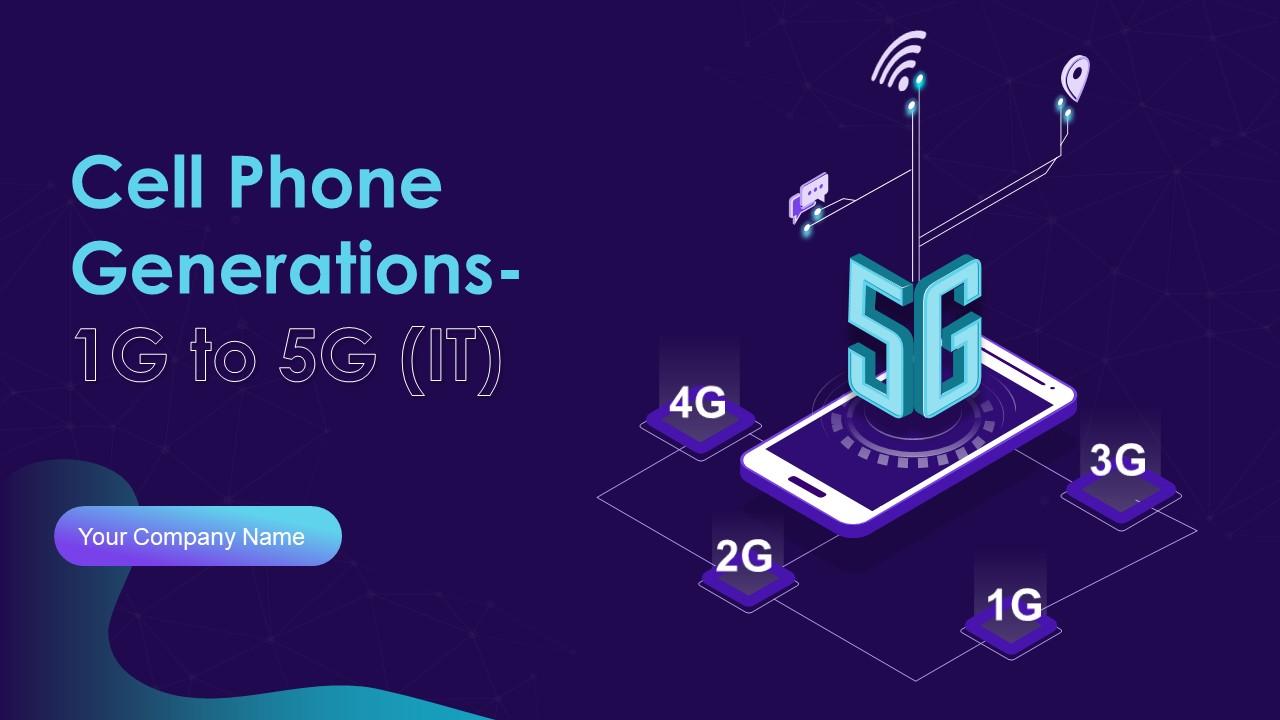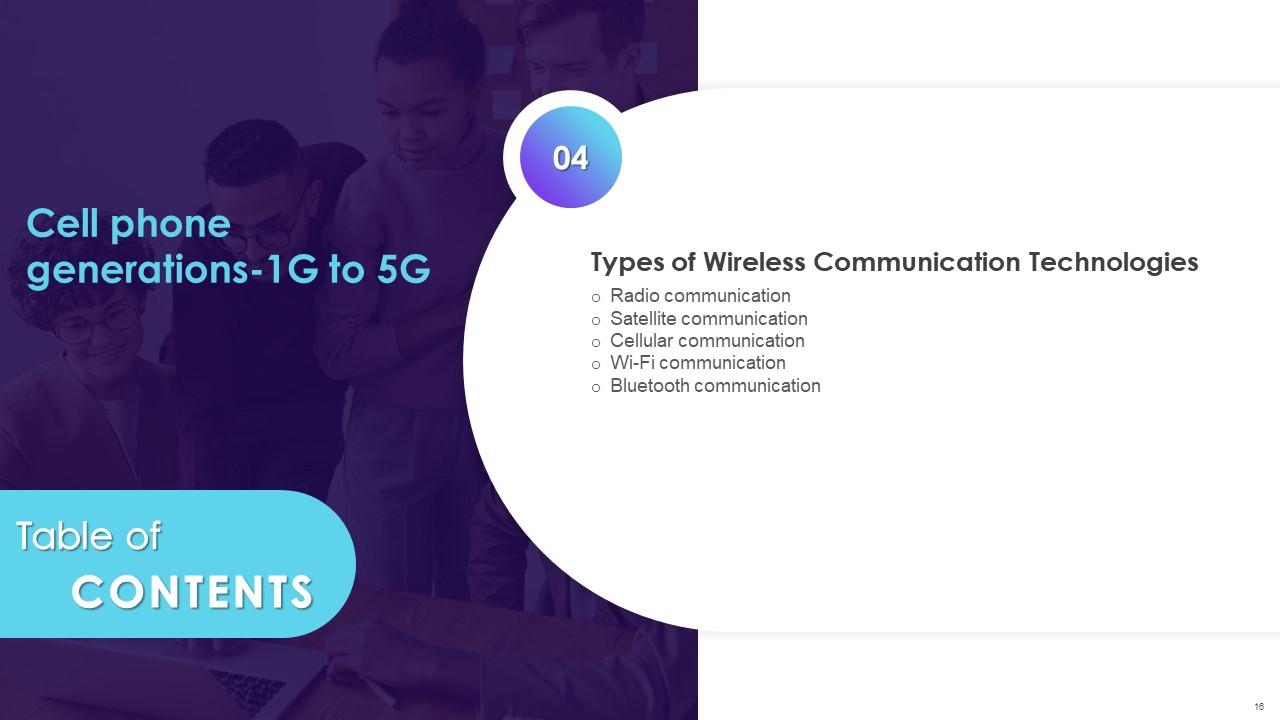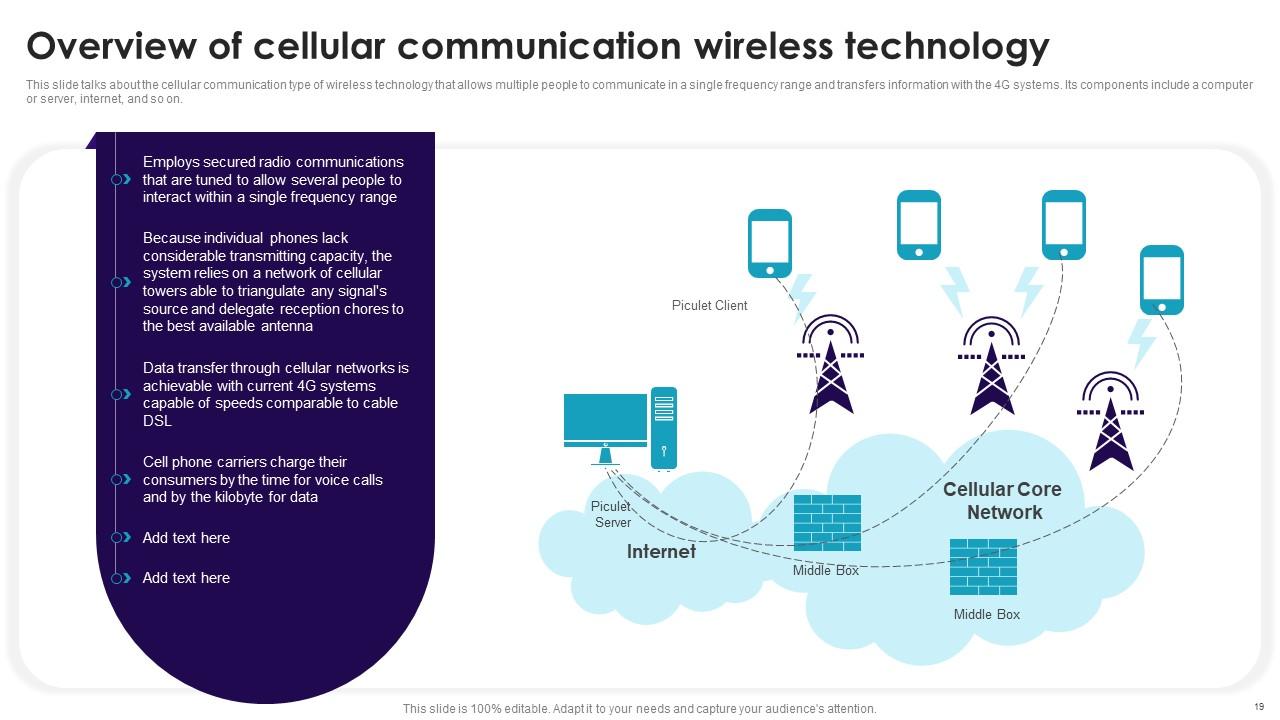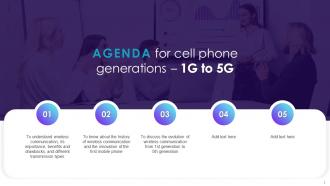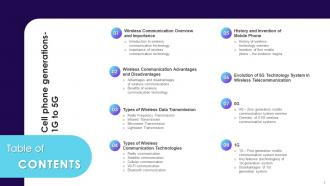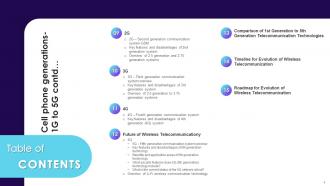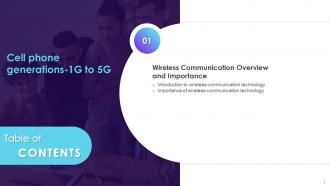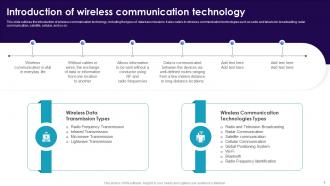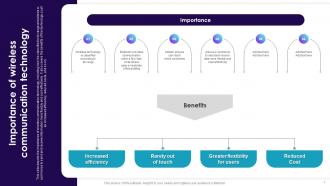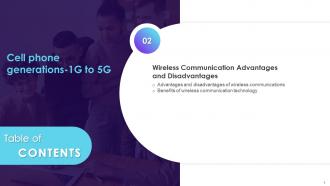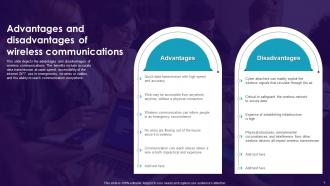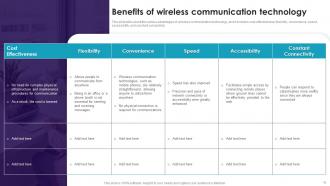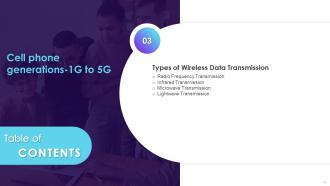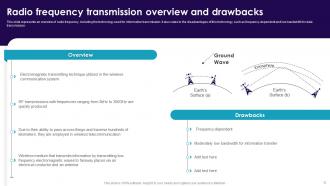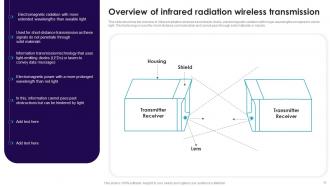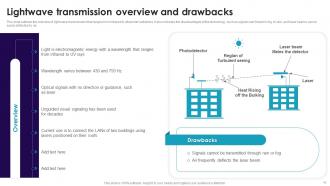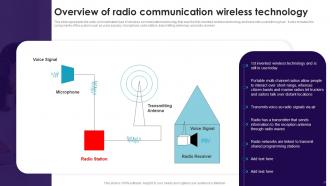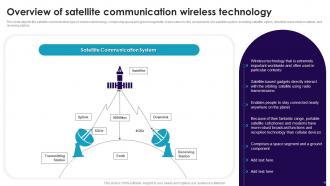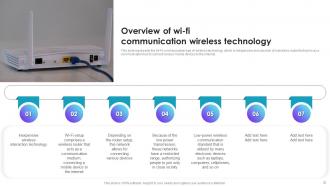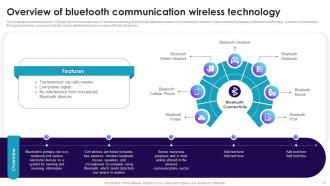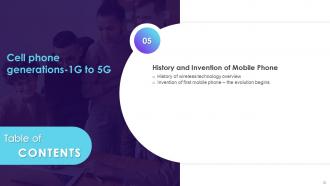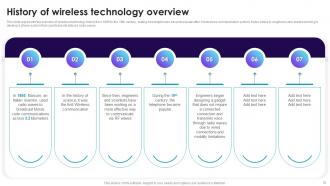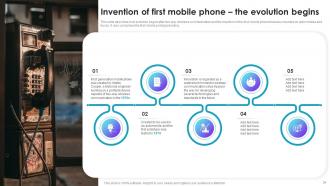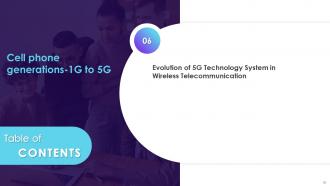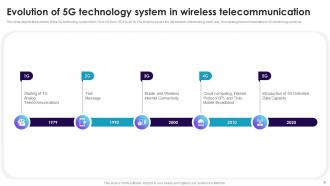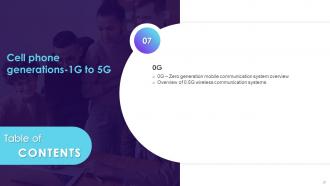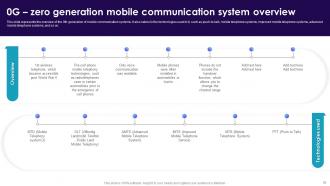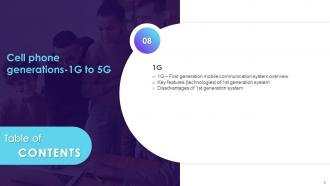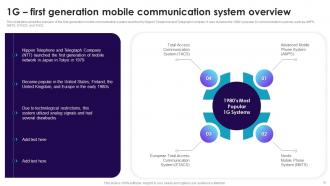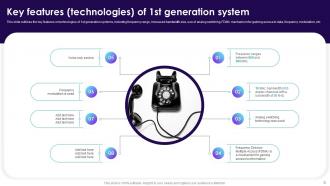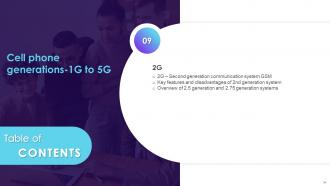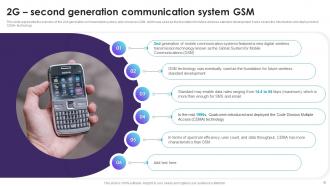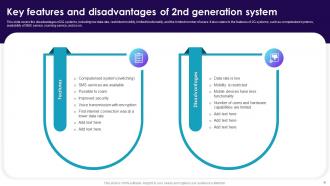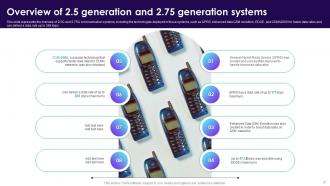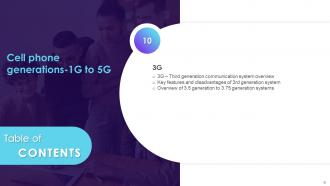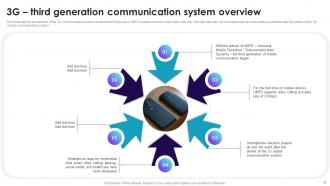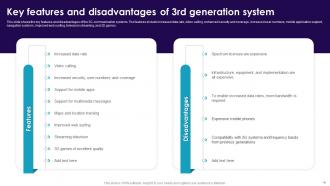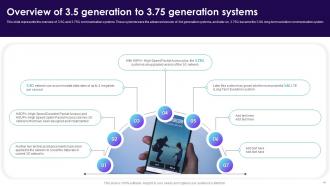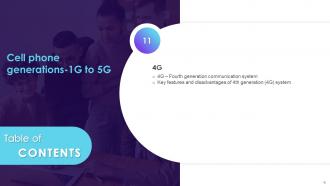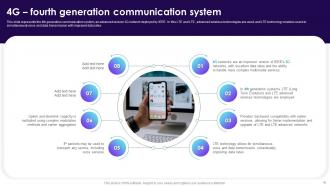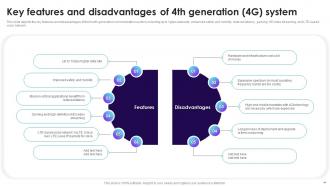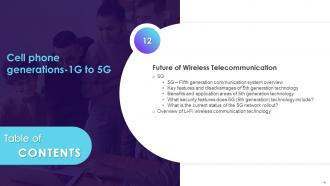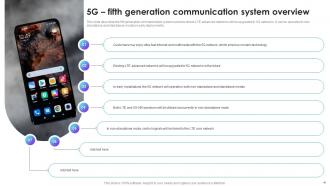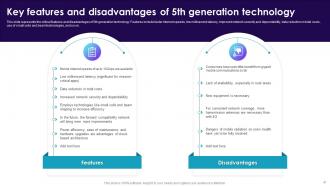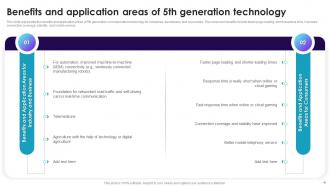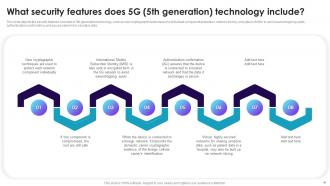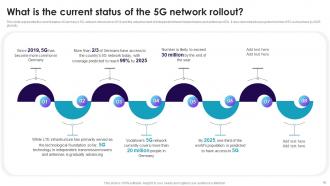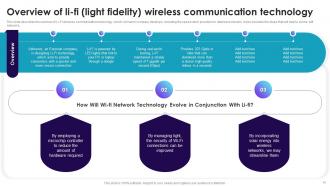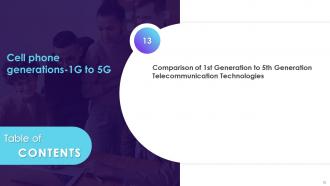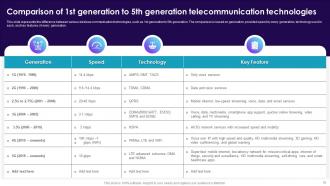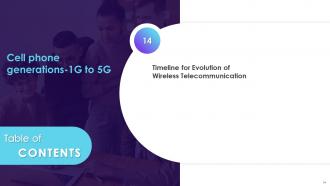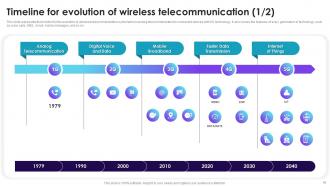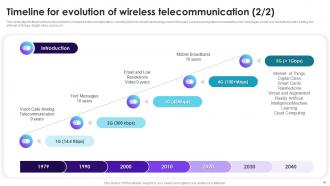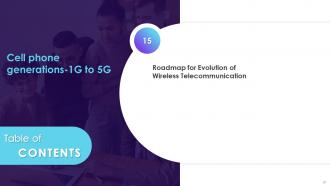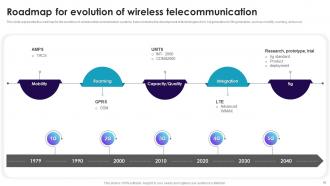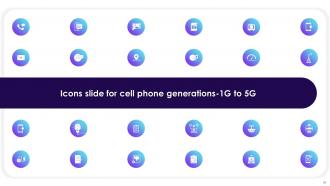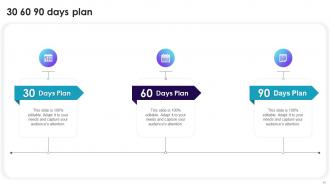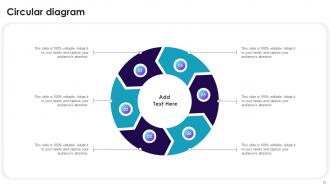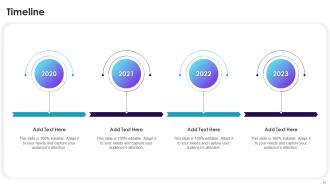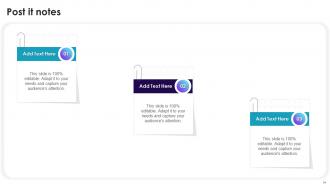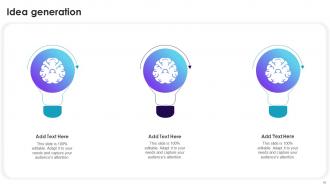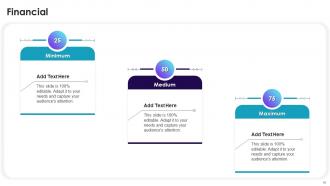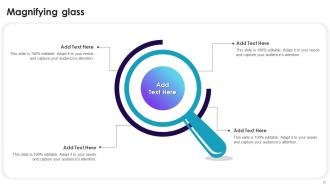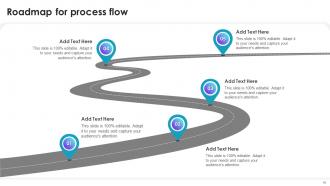Cell Phone Generations 1G To 5G IT Powerpoint Presentation Slides
Check out our expertly designed template on Cell Phone Generations 1G to 5G that showcases the evolution of the 5G technology system in wireless telecommunication, including its key features and disadvantages. It presents a brief outline of the development of the first mobile phone history and how 5G technology has changed over time. Our 1G to 5G Technology deck covers the evolution of the 5G technology system in wireless telecommunication, including its key features and disadvantages. The PPT provides an insight into the 2nd generation communication system, which is also known as GSM, its key features, weaknesses, and an overview of 2.5G and 2.75G systems. It also gives a glimpse of the third generations primary attributes, as well as its drawbacks and the 3.5G to 3.75G generation systems. Moreover, our 1G to 5G deck outlines a brief idea of 4G and 5G, including critical features, benefits, application areas, etc. Furthermore, it compares 1st generation to 5th generation telecommunication technologies. Lastly, a timeline and a roadmap for the evolution of wireless telecommunication are also included. Get access to this 100 percent editable template now.
You must be logged in to download this presentation.
PowerPoint presentation slides
Enthrall your audience with this Cell Phone Generations 1G To 5G IT Powerpoint Presentation Slides. Increase your presentation threshold by deploying this well-crafted template. It acts as a great communication tool due to its well-researched content. It also contains stylized icons, graphics, visuals etc, which make it an immediate attention-grabber. Comprising sixty nine slides, this complete deck is all you need to get noticed. All the slides and their content can be altered to suit your unique business setting. Not only that, other components and graphics can also be modified to add personal touches to this prefabricated set.
People who downloaded this PowerPoint presentation also viewed the following :
Content of this Powerpoint Presentation
Slide 1: This slide introduces Cell Phone Generations-1G to 5G (IT). Commence by stating Your Company. Name
Slide 2: This slide depicts the Agenda of the presentation.
Slide 3: This slide incorporates the Table Of Contents.
Slide 4:
Slide 5: This slide showcases the Title for the Topics to be covered in the next template.
Slide 6: This slide deals with the Introduction of wireless communication technology.
Slide 7: This slide elucidates the importance of wireless communication technology, including how it is classified to its range and allows e-commerce to send and receive information more flexibly and cost-effectively.
Slide 8: This slide highlights the Heading for the Contents to be discussed next.
Slide 9: This slide talks about the Advantages and disadvantages of wireless communications.
Slide 10: This slide mentions the various advantages of wireless communication technology, and it includes cost-effectiveness, flexibility, convenience, speed, accessibility, and constant connectivity.
Slide 11: This slide indicates the Heading for the Components to be discussed further.
Slide 12: This slide represents an overview of radio frequency, including the technology used for information transmission.
Slide 13: This slide describes the overview of infrared radiation wireless transmission, that is, electromagnetic radiation with longer wavelengths compared to visible light.
Slide 14: This slide showcases the overview of microwave transmission that uses two different methods such as the satellite method and the terrestrial method.
Slide 15: This slide outlines the overview of light wave transmission that ranges from infrared to ultraviolet radiations.
Slide 16: This slide elucidates the Title for the Ideas to be discussed in the upcoming template.
Slide 17: This slide presents the radio communication type of wireless communication technology that was the first invented wireless technology and transmits sound through air.
Slide 18: This slide depicts the satellite communication type of wireless technology, comprising space and ground segments.
Slide 19: This slide talks about the cellular communication type of wireless technology that allows multiple people to communicate in a single frequency range and transfers information with the 4G systems.
Slide 20: This slide portrays the Wi-Fi communication type of wireless technology, which is inexpensive and consists of a wireless router that works as a communication hub to connect various mobile devices to the internet.
Slide 21: This slide talks about the overview of Bluetooth communication type of wireless technology that enables data transmission by connecting two devices.
Slide 22: This slide highlights the Heading for the Topics to be covered further.
Slide 23: This slide showcases the overview of wireless technology history from 1895 to the 19th century, stating how telephones became popular after 1st wireless communication system.
Slide 24: This slide describes how evolution began after two-way wireless communication and the invention of the first mobile phone that was mounted on automobiles and trucks.
Slide 25: This slide indicates the Title for the Ideas to be further discussed.
Slide 26: This slide displays the evolution of the 5G technology system from 1G to 5G from 1979 to 2019.
Slide 27: This slide presents the Heading for the Components to be covered in the following template.
Slide 28: This slide exhibits the overview of the 0th generation of mobile communication systems.
Slide 29: This slide represents the overview of the 0.5G wireless communication system invented after the 0th generation of wireless technology.
Slide 30: This slide mentions the Heading for the Ideas to be discussed next.
Slide 31: This slide talks about the overview of the first-generation mobile communication system launched by Nippon Telephone and Telegraph Company.
Slide 32: This slide outlines the key features or technologies of 1st generation systems, including frequency range, increased bandwidth size, use of analog switching, etc.
Slide 33: This slide shows the disadvantages of 1st generation systems, including poor voice quality, poor battery life, mobility issues due to large screens, etc.
Slide 34: This slide incorporates the Title for the Topics to be covered in the forth-coming template.
Slide 35: This slide represents the overview of the 2nd generation communication system, also known as GSM, which was used as the foundation for future wireless standard development.
Slide 36: This slide covers the disadvantages of 2G systems, including low data rate, restricted mobility, limited functionality, and the limited number of users.
Slide 37: This slide showcases the overview of 2.5G and 2.75G communication systems, including the technologies deployed in these systems, such as GPRS, enhanced data GSM evolution, EDGE, etc.
Slide 38: This slide elucidates the Heading for the Components to be discussed next.
Slide 39: This slide depicts an overview of the 3G communication system and the technology used.
Slide 40: This slide shows the key features and disadvantages of the 3G communication systems.
Slide 41: This slide represents the overview of 3.5G and 3.75G communication systems.
Slide 42: This slide indicates the Title for the Contents to be covered further.
Slide 43: This slide represents the 4th generation communication system, an advanced version 3G network deployed by IEEE.
Slide 44: This slide depicts the key features and disadvantages of the fourth-generation communication system.
Slide 45: This slide mentions the Heading for the Topics to be discussed next.
Slide 46: This slide describes the 5th generation communication system overview where LTE advanced networks will be upgraded to 5G networks.
Slide 47: This slide represents the critical features and disadvantages of 5th generation technology.
Slide 48: This slide highlights the benefits and application areas of 5th generation communication technology for industries, businesses, and consumers.
Slide 49: This slide displays the security features included in 5th generation technology.
Slide 50: This slide illustrates the current status of Germany's 5G network rollout since 2019 and the advancement of independent transmission towers and antennas of 5G.
Slide 51: This slide describes the overview of Li-Fi wireless communication technology, which Velmenni company develops, including the speed rate it provides for data transmission.
Slide 52: This slide reveals the Title for the Topics to be covered further.
Slide 53: This slide represents the difference between various wireless communication technologies.
Slide 54: This slide incorporates the Heading for the Components to be discussed next.
Slide 55: This slide represents the timeline for the evolution of wireless telecommunication systems from analog telecommunication to connected devices with 5G technology.
Slide 56: This is yet another slide continuing the Timeline.
Slide 57: This slide portrays the Title for the Ideas to be discussed in the following template.
Slide 58: This slide illustrates the roadmap of the organization.
Slide 59: This is the Icons slide containing all the Icons used in the plan.
Slide 60: This slide is used to depict some Additional information.
Slide 61: This slide elucidates the 30 60 90 days plan for efficient planning.
Slide 62: This slide showcases the Circular diagram.
Slide 63: This slide presents the Company's Timeline.
Slide 64: This slide includes the Post it notes for reminders and deadlines.
Slide 65: This is the Idea generation slide for encouraging innovative ideas.
Slide 66: This slide mentions information related to the Financial topic.
Slide 67: This slide depicts a Magnifying glass for minute details.
Slide 68: This slide illustrates the Roadmap for process flow.
Slide 69: This is the Thank You slide for acknowledgement.
Cell Phone Generations 1G To 5G IT Powerpoint Presentation Slides with all 74 slides:
Use our Cell Phone Generations 1G To 5G IT Powerpoint Presentation Slides to effectively help you save your valuable time. They are readymade to fit into any presentation structure.
FAQs
Wireless communication technology refers to the transfer of information between two or more points without using any physical wires or cables.
The advantages of wireless communication technology include cost-effectiveness, flexibility, convenience, speed, accessibility, and constant connectivity. However, the disadvantages include security concerns, potential interference, and limited range.
The different types of wireless communication technology include radio communication, satellite communication, cellular communication, Wi-Fi communication, and Bluetooth communication.
The history of wireless technology dates back to 1895 when the first wireless communication system was invented. Since then, wireless technology has evolved significantly, leading to the development of various generations of mobile communication systems.
5G technology is the fifth generation of mobile communication systems that offers faster download and upload speeds, increased bandwidth, and improved connectivity. It also enables the development of new technologies such as the Internet of Things (IoT) and autonomous vehicles.
The benefits and application areas of 5G technology include faster download and upload speeds, improved connectivity, increased bandwidth, low latency, and support for emerging technologies such as IoT, augmented reality, and virtual reality.
-
The designs are super attractive. Me and my team love using SlideTeam’s presentations.
-
I can say with full confidence that all your business, academic, or professional work requirements will be sufficed with SlideTeam. Their gallery is as rich as 2Million+!!


